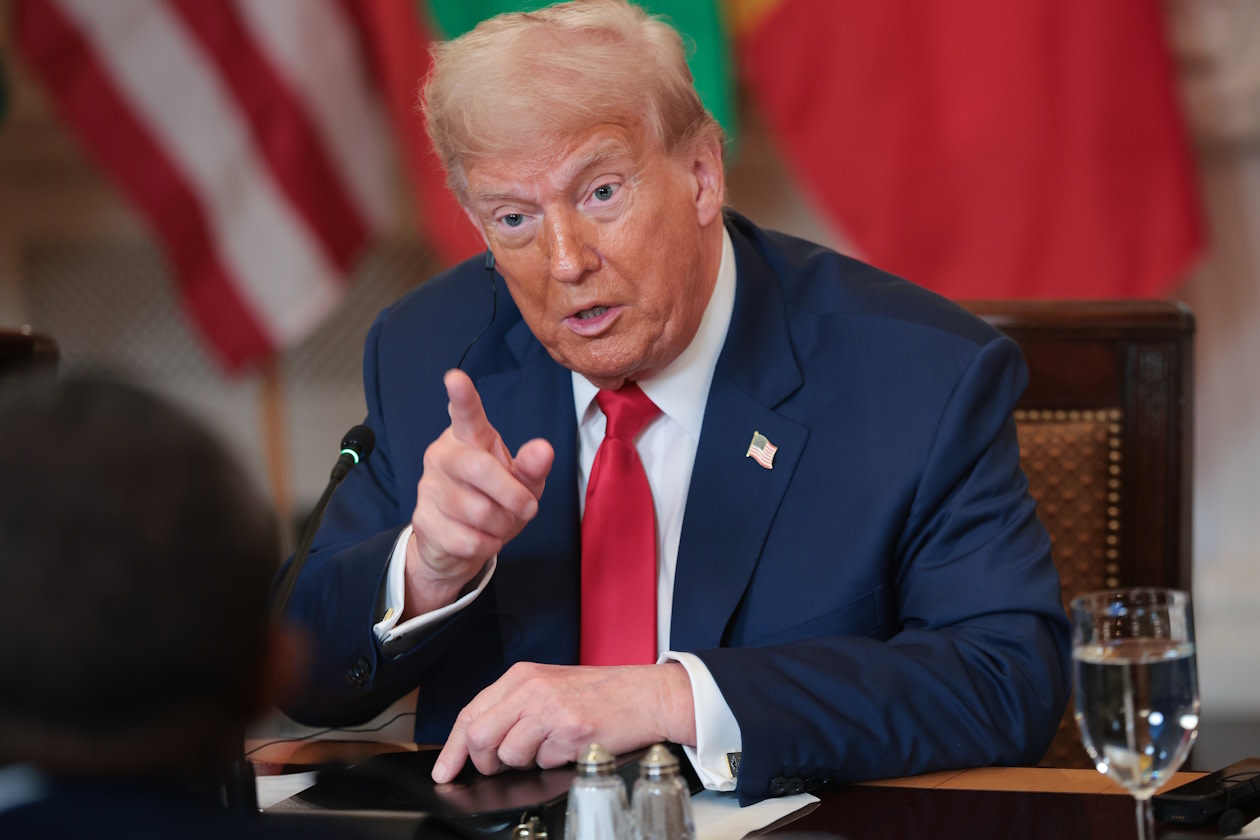It’s been six months since president Trump re-entered the Oval Office and the early days of his second term has been anything but dull.
It’s served up the kind of volatility, and resilience, that investors have come to associate with his leadership.
We’ve seen tariffs with bite but not yet inflation, tax cuts without funding, and stock market rallies built more on hope than clarity.
Following a steep crash earlier in the year, US stocks are back at all-time highs, but in dollar terms. For UK investors, returns have been dulled by a weaker dollar as the buck seems to have lost its bite.
Here's what’s happened so far this year under Trump, and what could be next for the US stock market.
This article isn’t advice. If you're not sure if a course of action is right for you, ask for financial advice. Remember, all investments can rise and fall in value, so you could get back less than you invest. Past performance also isn’t a guide to the future.
What is happening with trade talks?
Trade policy remains the great known unknown.
Tariffs are in place and have had surprisingly little immediate impact.
Inflation has yet to move meaningfully, and the job market remains steady.
However, the real issue is uncertainty.
John Authers at Bloomberg put it well, saying “decision making resides completely with the president himself, whose opinions are almost impossible to second guess”.
Policy might appear erratic and unpredictable at times, but there’s been no shortage of talk.
Multiple trade deadlines have come, and they have gone.
The latest target deadline is 1 August, but as of now, very few agreements have actually been signed.
Partners, both economic and political, have been left guessing. 100 deals in 100 days – not quite there yet.
The US stock market bounces back
When it comes to performance, what would normally matter to a UK investor is the sterling-denominated returns.
In other words, how well did the market perform if I was investing using GBP or if I needed to convert that money back to the currency I would normally spend.
After a high-to-low drawdown of nearly 22% in sterling-terms, exacerbated by ‘Liberation day’, the US stock market found its bottom in late April when tariffs eased and some political risk receded.
Since then, the MSCI USA index has risen around 20%, but remains around 6% down since Trump returned to office.
So as a GBP investor, you would’ve lost out.
However, as a USD investor and not having to convert your earnings back to GBP, the market is up almost 5%. That puts US stocks back at record highs in local currency terms.
A closer look at the US stock market bounce back
6 months summed up in 30 seconds
When you look at US stock market performance in pound sterling terms, the story is clearer and much less impressive.
The US market has lagged many of its international counterparts as a weaker dollar has dampened these returns for UK-based investors (as it costs more dollars to convert back to GBP).
This has in turn led to some questions on US exceptionalism and what could be next for US stocks.
However, given the US economy’s underlying strength, global influence and natural resilience, we think this is a little premature.
Afterall, it’s a market that’s managed to impress time and time again. But, of course, that doesn’t mean it will guarantee to keep delivering.
So, with this in mind, what could be next for US stocks?
Enter the age of TACO
‘America First’ was and is the policy of the president alongside the idea is he will always act to protect the market.
This in financial terms was known as the ‘Trump Put’ but that has evolved to a new term some investors are calling the age of TACO – Trump Always Chickens Out.
We’ve seen lots of U-turns already and markets appear to have clocked the pattern.
Big threat, market dips, White House backs off.
This though is not policy, but more of a survival instinct. And while the messaging might be chaotic, the reaction function is familiar. Investors aren’t ignoring the risk. They’re just assuming Trump won’t follow through if prices start falling.
That said, markets are increasingly used to the policy turbulence. But that’s because they’re also counting on pro-growth ingredients such as tax cuts, deregulation and a hands-off Fed will continue to support asset prices.
With Trump’s recent ‘Big Beautiful Tax Bill’, that optimism has been re-enforced, though funding is questionable and comes at longer term cost.
First, a rising deficit and second, yet another very public fallout but this time with his former 'head’ of Doge, Elon Musk.
Fed chair Jay Powell under pressure
The Federal Reserve remains independent, technically. However, we’re seeing a very public display of pressure on Jerome Powell to cut interest rates and this is becoming increasingly hard to ignore. Threats to his term have also been floated.
Despite the tariff uncertainty, so far, the Fed has stayed the course.
The markets however have displayed that a politically driven rate cut would rattle investor confidence. It means the messaging from Powell and his team will be closely watched in the months ahead.
What investors need to watch next
Inflation and jobs
Tariffs haven’t hit consumer prices yet, but they could. Investors are keeping a close eye on wage and price data for signs of pressure building.
Corporate earnings
Upcoming quarterly reports will reflect the first post-liberation day period. We could see profits come under pressure, especially among importers. But at the same time, a weaker dollar might help shield those revenues for multi-nationals with overseas earnings.
Trade progress
August is the new unofficial deadline and any concrete progress, or another missed milestone, could potentially move markets.
Interest rates
Will Powell hold the line, bend to political pressure or will he see his term come to an abrupt end? Either way, the Fed’s next moves could be critical for financial markets.
What it all means for investors
Six months in and the Trump era looks very much like the last. Full of noise, drama and contradictions, but with the markets that keep climbing.
Yes, in pound sterling terms, the US has lagged its international peers and yes, policy does remain hard to predict. But the US market remains deep, dynamic, full of opportunity and capable of absorbing shocks, especially when the chaos becomes the norm.
The US makes up over half of the global stock market and we think it’s just too big to ignore.
Election fallouts and leadership changes can bring short-term volatility, but we invest for the long-term with the HL US Fund.
We have handpicked external fund managers who we believe offer the best potential for long-term performance.
The external fund managers manage their own portions of the fund and we’ve given them clear boundaries on how to run them following their tried and tested strategies.


